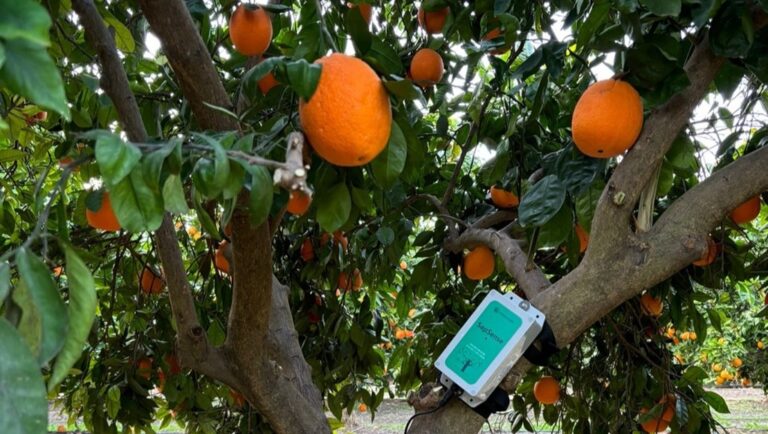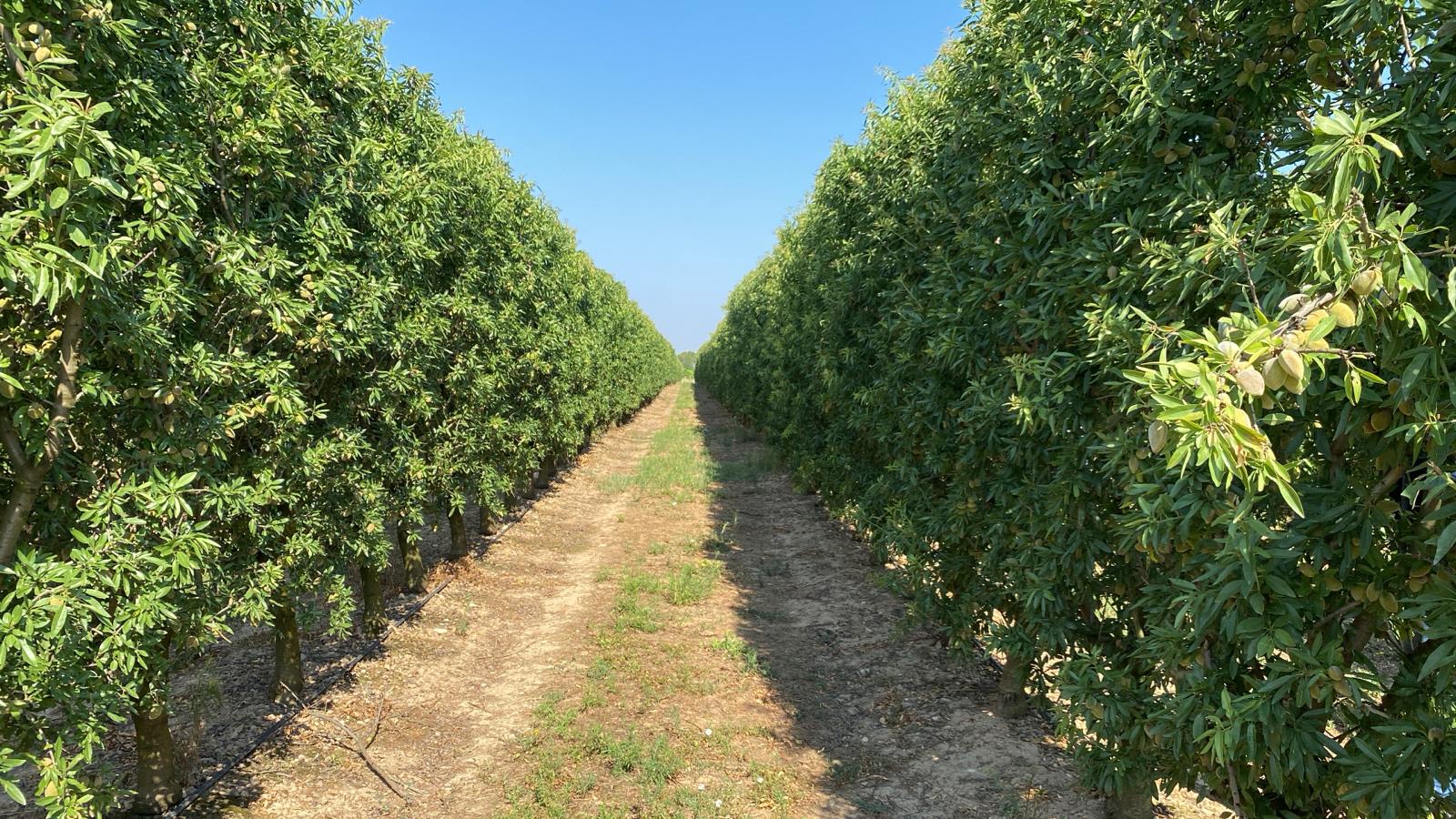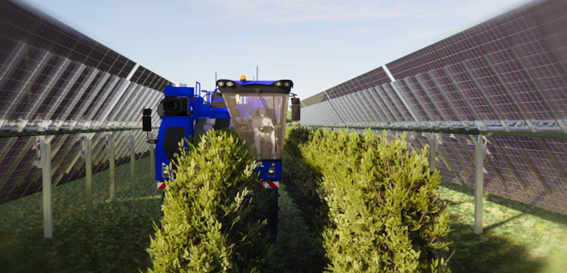Calculation of Irrigation Requirements and Actual Evapotranspiration in Fruit Trees Using Commercial Sap Flow Sensors
"Sap Flow Sensors Revolutionize Irrigation in Fruit Trees: Precision and Efficiency for Farmers"


For decades, the attempt to install sensors in plants and use them as “biosensors” to measure the interaction between soil moisture, atmospheric conditions, and plant response has been carried out using complex instruments employed by research centers and university departments. These instruments typically measure indirect effects on the plant (such as dendrometers, which measure tissue turgor in leaves or stems), focus on the amount of water present in plant tissues at a specific point in the crop cycle (such as stem or leaf water potential meters), or attempt to measure the amount of water (sap) flowing through the plant’s stem (sap flow meters).
Soil probes, which measure water availability for a crop at different depths, are also indirect measurement tools. While sometimes complex to install, they are easy to use. Their limitation lies in the fact that they do not provide a direct measurement of water use by the crop, but rather the “discharge” of water in the soil—whether through percolation to deeper soil layers, surface evaporation, or root absorption and plant transpiration.
Many farmers have been surprised more than once to see clear signs of water stress in their crops while soil probes still show sufficient water levels in the root zone. This is when plant physiologists warn that an external factor may be causing a transpiration deficit in the crop: no matter how much irrigation is applied, the plant is stressed, with closed stomata in the leaves, and is not operating under its normal transpiration regime. As a result, sap flow is “slowed down” from the root system to the leaf stomata. Plant transpiration, although related to soil water content, is heavily influenced by external factors such as temperature, sunlight, relative humidity, wind, crop phenological stage, and even phytosanitary treatments that may temporarily affect stomatal opening.
Sap Flow Sensors vs. Other Sensors and Soil Probes
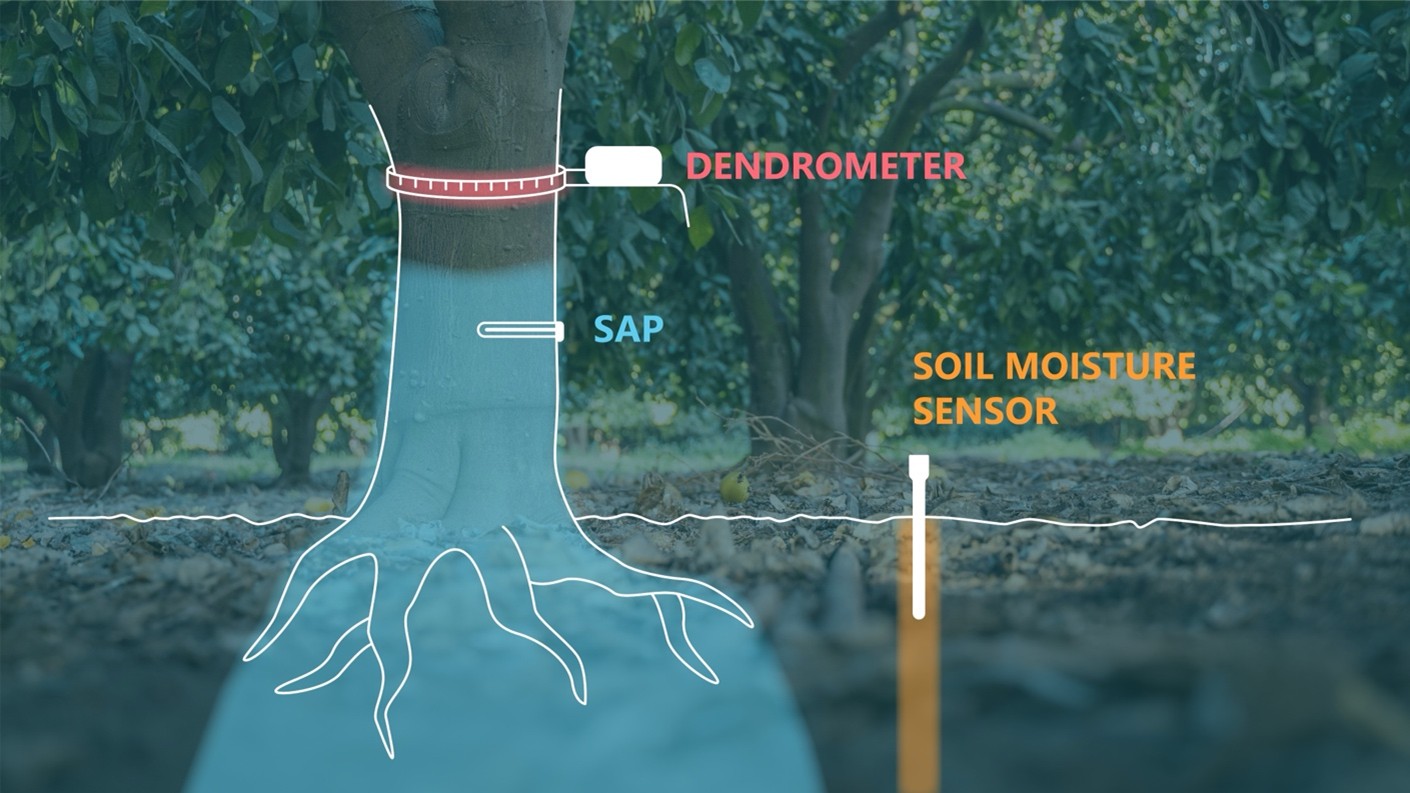
The Challenge of Developing a Sap Flow Sensor for Farmers
In 2020, a multidisciplinary team of plant physiologists, agronomists, systems analysts, mathematicians, and electronic engineers in Israel took on the challenge of developing a sap flow sensor for woody agricultural species that could provide farmers with a simple answer to the question: “Is it possible to develop a sap flow sensor designed for farmers to make immediate irrigation decisions?”
The challenge was to create a highly accurate sensor that also offered the following features for farmers:
- Precise placement guidance: Farmers would need clear instructions on where to place the sensors within their fields to ensure the measurements were representative of each irrigation sector. Today, each sector is typically managed entirely by a single irrigation valve, regardless of spatial variability in the field.
- Ease of installation: The sensor should be so easy to install that, with minimal training, any farmer could set it up in their crops without needing a technician. Installation should involve minimal intervention in the plant’s trunk—non-invasive and allowing for quick recovery of sap flow through perfect healing of stem tissues.
- Portability and autonomy: If the device were portable, lightweight, had good operational autonomy, and required no maintenance, it could be scaled to every irrigation sector on large farms at a reasonable cost.
Once daily sap flow data is collected from the instrumented plants, the farmer would need a very simple and quick-to-interpret output that enables “real-time” decisions—whether to increase or decrease irrigation flow in each monitored sector. This data would be based on the actual water absorbed and transported by the plants, not just on soil moisture content.
Single-Probe Sap Flow Sensor
The more complex aspects of development would remain “invisible” to the farmer. Creating a small, easy-to-insert sensor meant it had to consist of a single probe capable of measuring the amount of sap flowing upward through the xylem vascular system in the trunk. This challenge was solved by leveraging the heat dissipation effect caused by sap movement. As sap ascends through the small trunk area artificially heated by the inserted probe, the rate at which the probe loses heat can be measured. If the probe is periodically heated a few degrees above ambient temperature—say, every hour—and the time it takes to cool down is recorded, this heat dissipation (caused by sap flow) can be used to track the increase in sap flow from dawn to midday (peak transpiration) and its decline until nightfall. This provides a precise measurement of tree transpiration throughout the day and in that specific field.
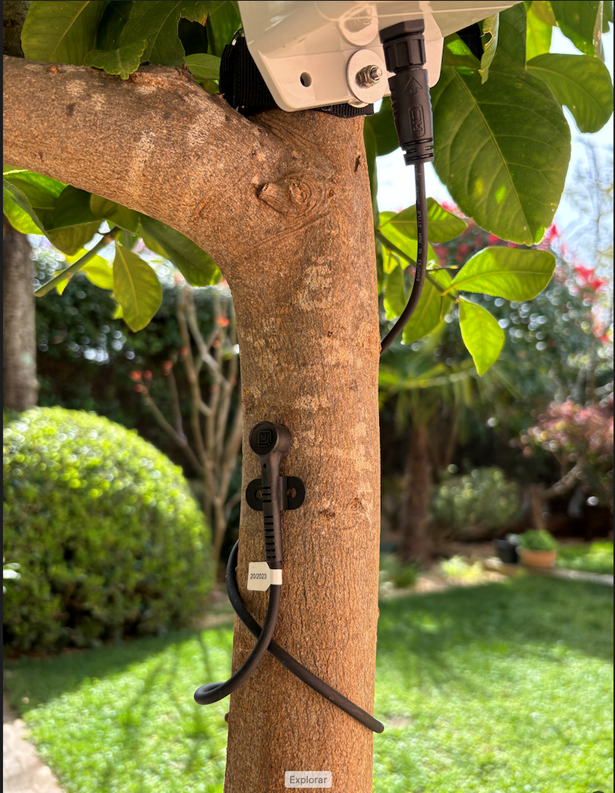
Where and How Many Sensors Should Be Installed?
The second challenge—sensor placement within the field—was effectively solved with the help of today’s high-definition multispectral satellite imagery. These images, using crop variability indices (NDVI), allow for zoning of each irrigation sector regardless of the underlying cause of variability (soil, slope, variety, tree age, vegetative state, etc.). Depending on the monitored area, each sector can be represented with an optimized average evapotranspiration value using three to five strategically placed sensors within the irrigation zone.
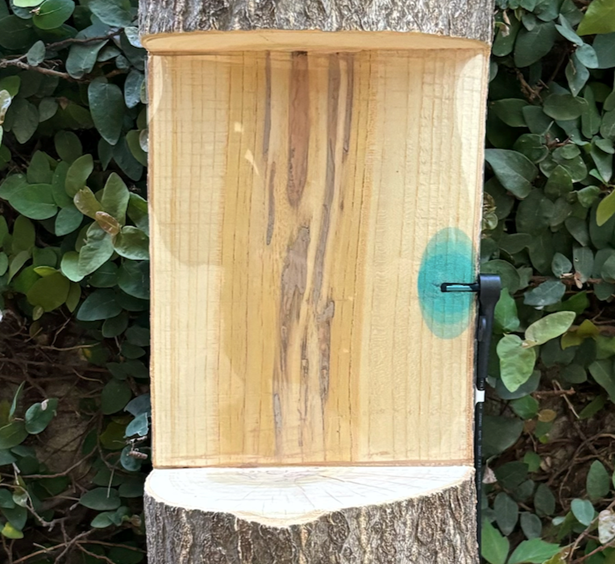
Actual Evapotranspiration (ETa) vs. Calculated Evapotranspiration (ETc)
The most complex part of the process is interpreting all the information needed to calculate the field’s evapotranspiration, which must complement the daily sap flow curve obtained from the sensors. This requires combining meteorological data (ETo) for that specific geographic location with the plant species being measured (and even the variety), trunk size, soil type, planting density, tree age and canopy coverage, and irrigation system design—through an algorithm capable of calculating the average Actual Evapotranspiration (ETa) for that irrigation sector.
This valuable ETa data replaces the previously used Calculated Evapotranspiration (ETc), which was traditionally estimated using the well-known equation ETo × Kc = ETc, where ETo came from nearby weather stations and Kc (crop coefficients) were theoretical values calculated for each crop, based on limited geographic locations and specific phenological stages.
From late 2021, with the development of the first models, through August 2023, the data provided by the new sensors offered daily graphs comparing ETa (actual) with ETc (calculated). For the first time, this allowed researchers to calculate the daily deviation between the two values in real time and to monitor and make immediate decisions about the actual state of the crop—rather than waiting until the end of the season to analyze what went well or not.
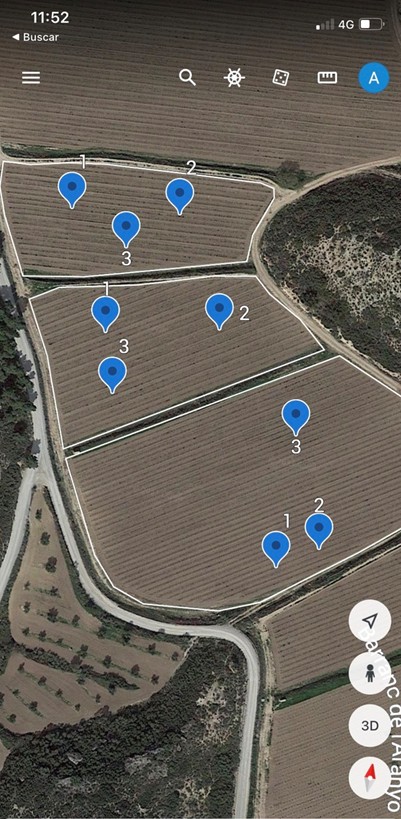
Validation by Research Centers and Irrigation Companies
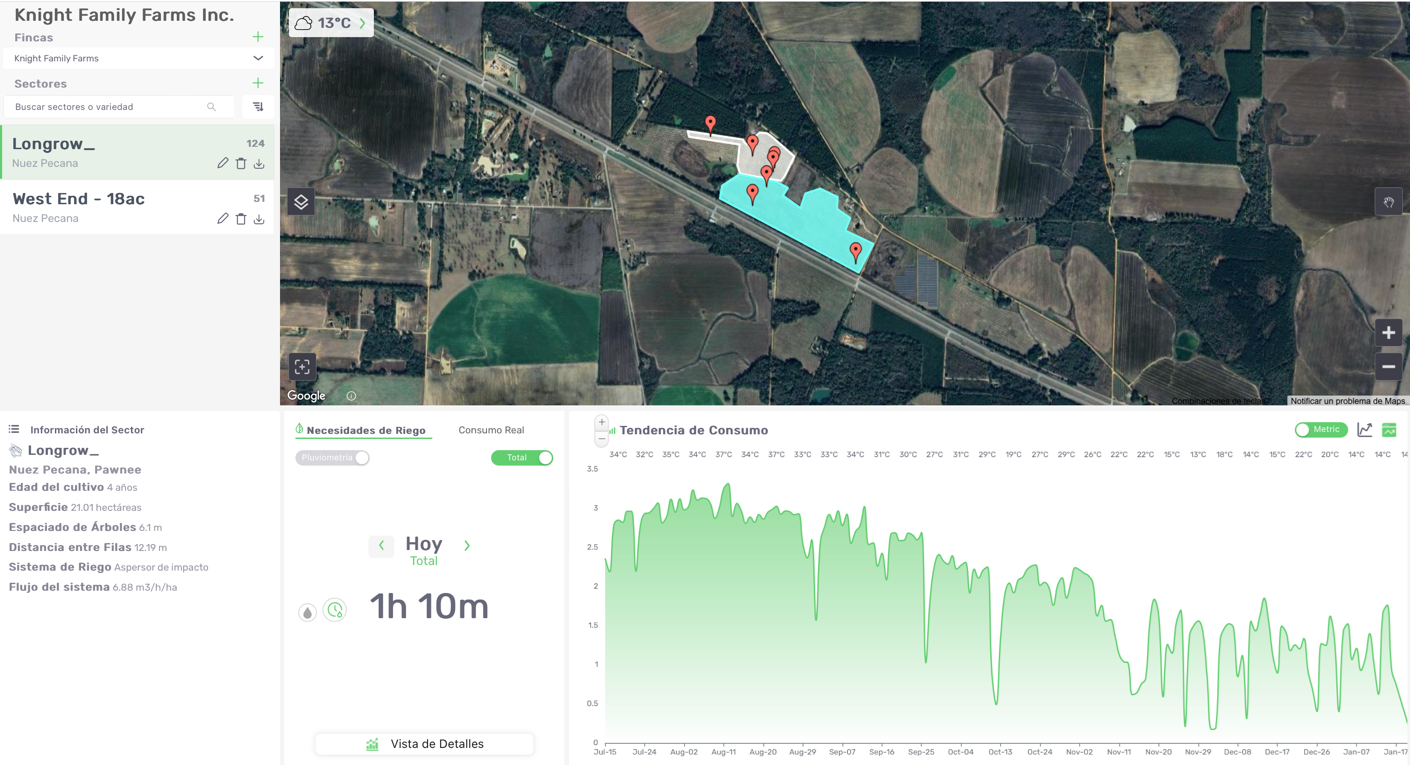
Irrigation Recommendations Based on Sap Flow Interpretation
However, despite the excitement in the scientific community, a major oversight became apparent during development—something the agronomists on the team quickly noticed: the vast majority of farmers were not irrigating based on ETc calculations. Instead, they irrigated based on “the same daily frequency and number of hours they’ve always used,” or “when they started to see signs of water stress,” or, for those with soil probes, “when soil moisture dropped below a certain threshold.” In other words, farmers in Israel, California, the U.S. East Coast, Mexico, Spain, Portugal, Italy, and beyond who were using the new sap flow sensors were saying: “I don’t know how to use this ETa value to make daily irrigation decisions.”
That’s when the Israeli team proposed a new approach: irrigation recommendations should be based on a combination of the recent past state of the trees and the future weather forecast. In other words, if we know the sap flow behavior—and therefore the evapotranspiration values of the crop field—for the days leading up to today, and we also have the most accurate possible weather forecast for the coming days, we can calculate highly precise irrigation volumes for that specific period of the season.
This information must be adaptable to the different ways farmers calculate how much water to apply: some use liters per square meter (mm), others need cubic meters per irrigation sector, but most prefer to know the irrigation system run time based on its design and flow rates. As of the writing of this article, hundreds of farmers already using sap flow sensors in crops like almond, pistachio, walnut, pecan, hazelnut, citrus, avocado, apple, grapevine, peach, and kiwi receive daily irrigation recommendations based on direct plant measurements. This data perfectly complements their years of experience with their crops and fields, helping them make precise decisions about when and how much to irrigate.
Very soon, the calculation algorithms will be calibrated for other stone fruits, olive, table grapes, tropical crops, persimmon, and more. The integration of artificial intelligence will enable continuous learning to optimize irrigation for each variety, crop, and region of the world—based on direct sap flow readings from the plants themselves.
